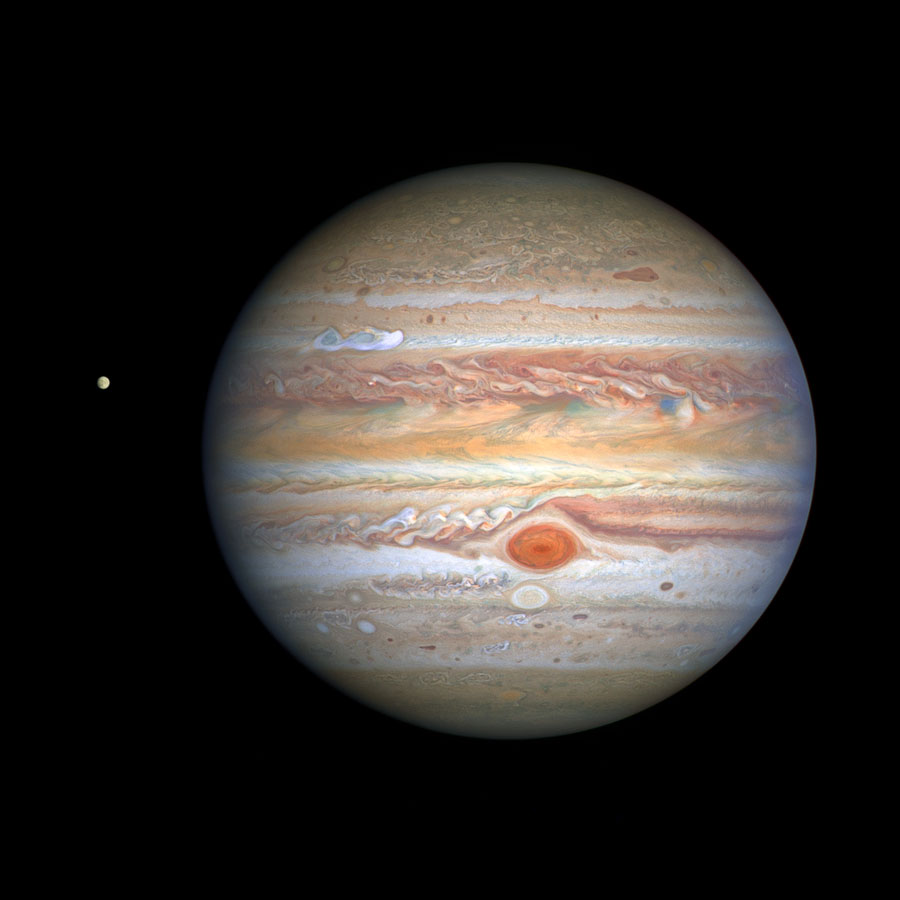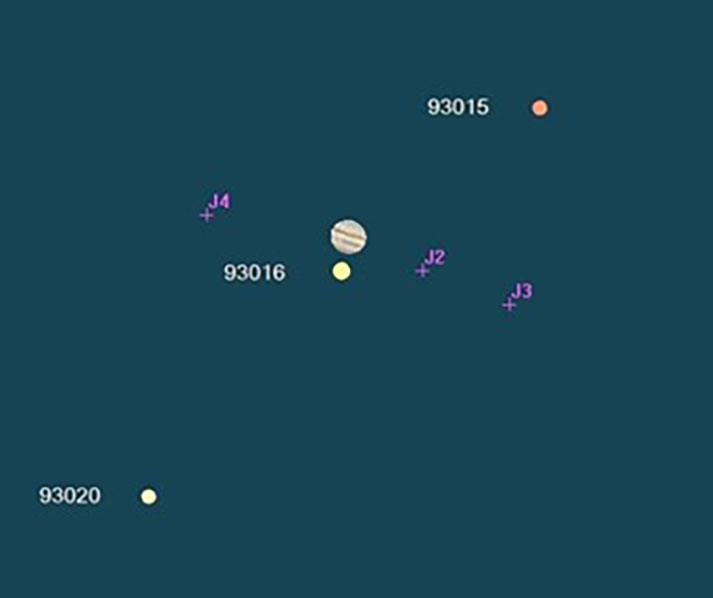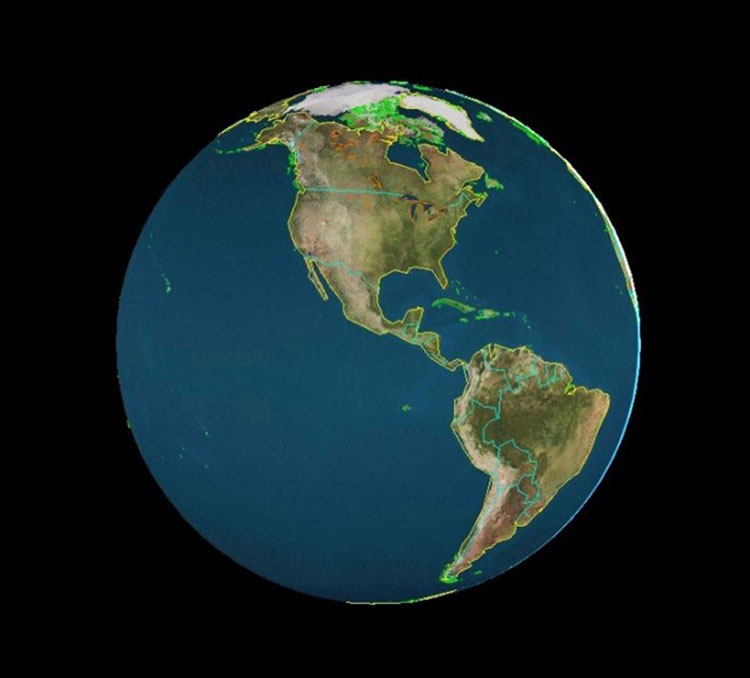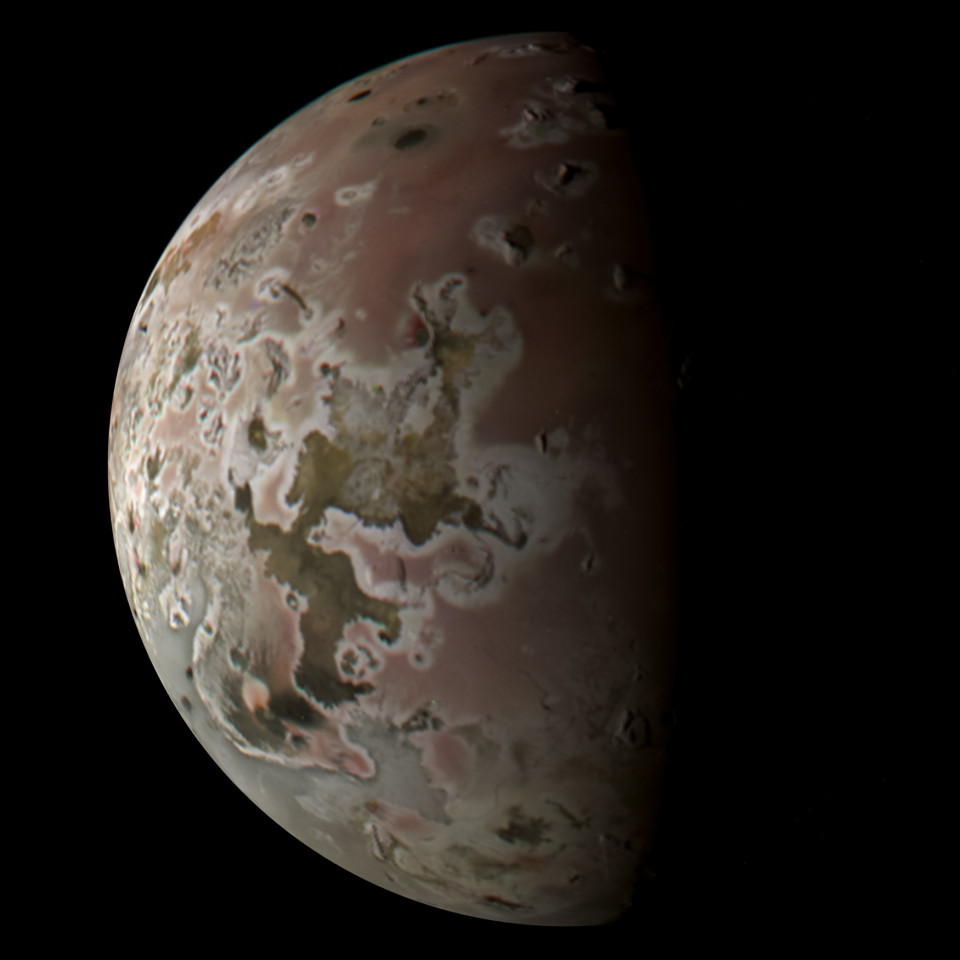Get involved in an extraordinary experiment to test Einstein’s theory of General Relativity — and you can do it from your backyard.

NASA / ESA / STScI
General Relativity predicts that starlight will be deflected by 0.016″ if its light passes close to the planet’s limb. Astronomers measured this at radio frequencies, but no one has accomplished this in the visible spectral region. A fortuitous alignment of three bright stars with Jupiter in October 2023 should make this measurement possible using only small telescopes placed almost anywhere in the Western Hemisphere. The data collection will require continuously recording images over several hours over two nights. The data analysis will extract the star positions from thousands of images, followed by averaging the values in 30-minute intervals to reduce the measurement noise. A test in November 2021 demonstrated the required precision. Interested astronomers are invited to contribute data to this project. If successful, this measurement will fulfill one of Einstein’s wishes.
Introduction
Stellar deflections due to General Relativity have been measured near the Sun since 1919, where the deflection coefficient is 1.75″ for stars located near its limb (see references 1, 2, and 3 listed at the end). Einstein suggested this in 1916, but astronomers were understandably frustrated because observing during a total eclipse was necessary. Those events are not very common or convenient, and the observations had to be completed during the few minutes of totality. Einstein also suggested that these measurements could be done during the daytime without an eclipse, but that has proven unsuccessful (references 4, 5, 6).
Einstein’s third suggestion was to use Jupiter as the gravitational source. Deflections there would be about 100 times smaller than those near the Sun, so technology was not good enough during his lifetime. The Hubble Space Telescope attempted to measure the deflection of a star near Jupiter in 1995, but no results were obtained (reference 7). While the Gaia analysis included Jovian deflections in calculating the positions of stars for its catalog (reference 8), a direct optical measurement has never been completed.
One convenience of using Jupiter to measure stellar deflections is that an observer can use a telescope almost anywhere in the world, as long as a bright star passes within 100″ of Jupiter while at high elevation in a clear sky. The Jovian passage takes several hours, so timing is not critical and the measurement noise can be reduced by analyzing thousands of images. It is also essential that the target star be accompanied by two bright reference stars so that an accurate plate scale can be calculated. Because every instrument slowly changes with temperature, the best possible reference stars would be in a line, minimizing changes in the relative plate scale.
By coincidence, such a conjunction does appear the night of October 27–28, 2023. Figure 1 shows the target star and the two reference stars near Jupiter. The closest approach of SAO 93016 is at 7:15 UT (3:15 EDT; 00:15 PDT), when it will be only 25″ from Jupiter’s limb. Jupiter’s gravity should generate an apparent outward deflection of 0.0085″. This close conjunction last occurred in 1928 and does not repeat until 2106, so this opportunity needs to be measured!

Guide 9
The view from Jupiter in Figure 2 shows Earth at the time shown in Figure 1. Jupiter shines high near the meridian in much of the U.S., but southern sites with good seeing will provide better measurements.

Guide 9
Data Collection
Amateur telescopes, cameras, and mounts are perfectly suited to capture the images needed for this project. The instrument requirements are summarized here.
In moderate (1″ to 2″) atmospheric seeing, the best star position measurements result from using a plate scale near 0.5 arcsec/pixel. A Luminance filter acceptably reduces atmospheric chromatic aberrations since the targets are at high altitude. The bright targets means that 100-mm apertures can operate using 1-second exposures. For 2.4-micron CMOS pixels, the telescope should have a focal length near 1 meter, just right for a 127 mm f/8 refractor. For 3.8-micron CMOS pixels, the ideal telescope focal length is 1.6 meters. A 200-mm F/8 Ritchey-Chretien telescope design also generates minimum distortions, providing the best calibrations. Since the imaging takes place all night long, a carbon-fiber design helps minimize focal shifts. Other telescope and camera combinations might work well, but should be tested as described below in the "Results" section.
The imaging camera should be a CMOS design, so that a 1 frame-per-second (FPS) rate can be maintained. Only a small subframe needs to be saved, but this still requires Gigabytes of storage space. Since 13′ separates the reference stars, the CMOS sensor needs to be at least 1600 pixels wide. Most amateur units meet that requirement. A cooled camera is not essential, since the exposures are so short. On the other hand, a cooled camera might be more stable, important for the precise measurement.
Since the imaging lasts all night long, the ideal mount would be a fork style. A German equatorial mount requires pausing for a few minutes while the observer flips the mount across the meridian. Good tracking keeps the stars nearly in the same location on the sensor, avoiding potentially difficult optical distortion corrections. If Jupiter or one of the stars is used to auto-guide the telescope mount, then the optical distortion corrections will be small, allowing most telescopes to work OK.
Another approach to get ideal data is to use a methane filter to reduce the glare from Jupiter. If a wide bandwidth is used, then Jupiter is still pretty dark, and the other three stars are still easily recorded with a 200-mm aperture telescope. I will probably be using two telescopes, one with the filter and another one without the filter. This is a unique opportunity, so I don’t want to waste it!
Data Analysis
Since the observations contain so many images, writing a program to automatically find the star positions is needed. There are two methods; curve fitting or center-of-mass (CoM). Because the stars are so bright, their signal-to-noise ratios exceed 100. A CoM proof-of-concept Python program was written and tested with good results, but curve fitting is still being evaluated. If anyone wants to help with this program, or add a nice GUI, that would be a valuable contribution.
The bright scatter from Jupiter needs to be subtracted, but since the target star does not get too close to Jupiter’s limb, the scatter should be easy to handle. This is being evaluated with simulated stars on archived Jupiter images. A secondary spider causes some additional scatter, but this would be absent with a refractor.
Results
The target stars are visible months before October, providing opportunities to test data collection and analysis. With Jupiter far away, the deflection of the target star in the final analysis should be zero, with an uncertainty much smaller than 0.0085″. One such test was completed in November 2021. While this test used short exposures, longer ones should work just as well.
Using a Ritchey-Chretien telescope and a CMOS camera with 3.8-micron pixels, a series of 216,000 images were taken at 20 FPS for three hours. An example image is shown in Figure 3. A Python program using CoM calculations processed the images. The plate scale determined by the outer two stars averaged 0.489 arcsec/pixel. The plate scale varied slowly because the telescope temperature change affected its focal length.

Guide 9
The plate scale thus determined for each image was multiplied by the measured target star separations in the same image. Those numbers were averaged over 30 minute periods (36,000 images). They were fit to a quadratic curve and the standard deviation of those values was found to be 0.0025 arcsec. This is small enough compared to the expected deflection that the final results from 2023 should be definitive. Based on 1.5″ seeing, 30-minute averaging should reduce the position errors down to 0.003″ , in good agreement with this test run (see reference 9).
Conclusions
In October 2023, the optical deflection of a star near Jupiter can finally be measured. Small telescopes and inexpensive CMOS cameras can be used anywhere the conjunction is visible, and amateur astronomers are encouraged to test their equipment, using the same target stars, as early as the summer of 2022. A beta version of the analysis program will be publicly available. When the results from other amateurs or groups are combined, the final results should be even better. Please contact the author with your interest in joining this historic experiment: [email protected].
References
1. Einstein, A. “Die Grundlage der algemeinen Relativitätstheorie“, Annalen der Physik 354, # 7 pp. 769-822 (1916).
2. Dyson, F.W, A.S. Eddington, and C. Davidson, “A Determination of the Deflection of Light by the Sun’s Gravitational Field, from Observations Made at the Total Eclipse of May 29, 1919”, Philosophical Transactions of the Royal Society of London, Series A, 220, pp. 291-333 (1920).
3. Bruns, Donald G. “Gravitational starlight deflection measurements during the 21 August 2017 total solar eclipse”, Classical and Quantum Gravity 35 (2018) 075009 (21 pp).
4. Lindemann, A.F. and F.A. Lindemann, “Daylight Photography of Stars as a means of testing the Equivalence Postulate in the Theory of Relativity”, Monthly Notices of the Royal Astronomical Society 77, pp. 140-151 (1916).
5. Handler, F.A. and Richard A. Matzner, “Photographic Astrometry against a Bright Sky: Theory and Application”, The Astronomical Journal 83, # 10, pp. 1227-1234 (1978).
6. Bruns, Donald G. “On the Difficulty of Measuring Star Deflections near the Sun Without an Eclipse”, Research Notes of the American Astronomical Society 3, # 12, article ID 197 (2019)..
7. Personal communications with Bill Jeffreys and Art Whipple regarding their oral paper at a 1996 AAS convention.
8. Prusti, T. et. al. “The Gaia mission”, Astronomy and Astrophysics 595, A1, (2016).
9. Han, Inwoo, “The Accuracy of Differential Astrometry Limited by the Atmospheric Turbulence”, The Astronomical Journal 97, # 2, pp. 607-610 (1989).
 0
0









Comments
You must be logged in to post a comment.